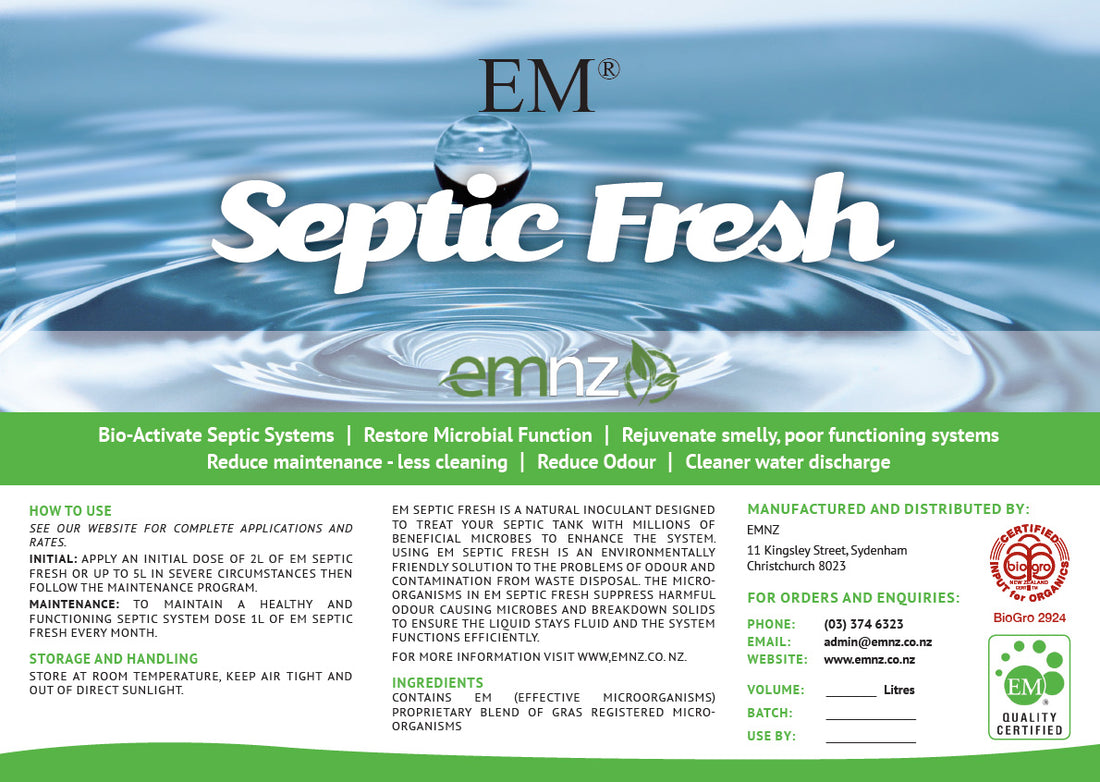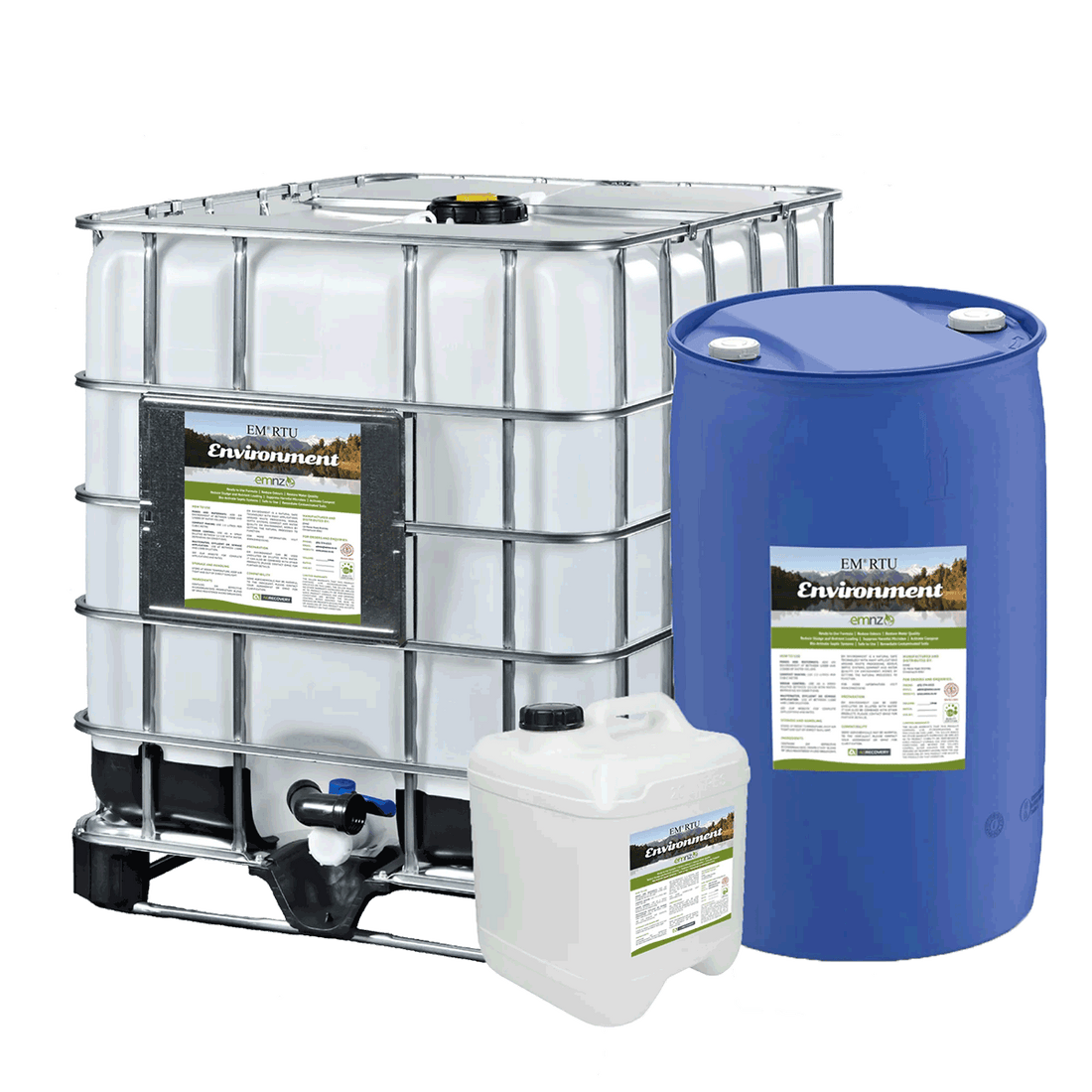EM For Waste Management
EM is extremely effective at reducing odours and restoring polluted water & waterways
When Dr Higa formulated EM, his intention was that it would be used primarily for applications on soils and crops for food production. Dr Higa soon discovered that EM not only improved soils and subsequent plant growth, but also was able to restore polluted water and waterways. In addition it was shown to be extremely effective at reducing odours, composting food waste and other waste quickly. [odor control at the Landfill]
Some of the most spectacular success's of EM has been in areas concerning the environment. One of the biggest being the restoration of the Seto Inland Sea of Japan. With large scale applications over a number of years, they have halted the degradation and have seen large improvements in the ecology of the sea (ref. Ecopure 2003 Dec 1)
On the local scene in Christchurch, the Christchurch City Council have been using EM now for several years for composting municipal green waste, and for odor control at the Landfill.
Waste Water - Control Bad Odours & Improve Sludge Build Up With EM
There are usually two issues around waste water that can be problematic:
- Odour
- Sludge build-up
EM is very effective at controlling bad odours coming from waste water. Initially this has a rapid suppressing effect, then as the function of the waste water system is restored to a biological one, the odour is not produced at all.
Over time the sludge will reduce and clarity and quality of the water will improve significantly making it suitable for applying to land and crops in many instances. In New Zealand many Wineries are using EM to control odour in their waste water systems.
EM for Odour Control - Septic Tanks, Landfills, Animal Farming, Urban Sewerage
Odour is a major issue in many situations today. From septic tanks at home... to landfills and urban sewage systems. From the pet enclosure at home... to large scale pig farming or calf rearing, EM can have a rapid and effective impact on malodours.
EM works by overcoming the odour producing microbes (such as sulphide producing bacteria), and replacing them with the beneficial microbes that are contained in EM. They then change the process of breakdown so that the odour producing microbes are displaced.
The effect of spraying an odourous environment can be very rapid, the odour can be reduced to 80% within 8 hours.
There are two approaches:
- Using EM as a spot treatment. That is usually making a tank mix of 1% EM Ready to Use, and spraying over the area that is causing the odour. The treatment is reapplied as required to manage the odour.
- Using EM as an integrated treatment, so introducing a regular input of EM Ready to Use into the waste, usually at dilutions between 1:1000 and 1:10,000 of EM Ready to Use to waste volumes.
This is the best option because smell will be controlled effectively and constantly, and other benefits will be also realised...such as more effective breakdown of water and waste organic matter and harmful pathogens.
One of the most common uses of EM Ready to Use in NZ is for the treatment of waste water systems in Wineries. This application is very effective for controlling odours and producing a higher quality of water outflow for irrigation (read paper on Use of EM in a Winery).
Also for more about Sewage Sludge Composting see here
Or to learn about EM treatments of odour, waste water, and environment problems here
Shop EM for Waste Management
-
EM™ Septic Fresh
 EM™ Septic Fresh
EM™ Septic Fresh- Regular price
-
$62.50 $134.35 - Regular price
-
- Sale price
-
$62.50 $134.35
Quick view
Testimonial from Interclean
"Interclean Industrial Services operates a liquid waste disposal business from an open air site in South Auckland. This business deals primarily in septic tank and grease trap waste disposal. Due to ongoing odor complaints from neighboring businesses, and subsequent council involvement, I took it upon myself to research a solution.
In March of 2010 I initiated a trial of Effective Micro-organisms “EM”, having learned about the product from a friend. It is fair to say, that the staff working at our liquid waste plant were less than enthusiastic about trialing yet another product recommended by someone with less experience than their own in the field. However it did not take long to change this attitude. The effect on the first truck load of “EM” dosed product brought into the plant was so remarkable that none present could deny this was likely to be the solution we were looking for. This tanker had been pre loaded with 50 litres of “EM-A” prior to leaving the plant 4 hours earlier. It had been filled over the next 3 hours with 16,000 litres of septic tank waste, and then driven back to the plant for discharge into the processing plant.
Those present at the time of discharge were in agreement that there was possibly an 80% reduction in malodor over this short time. An immediate commitment was made to continue to use “EM” for odor control.During the subsequent few months it was observed that the general malodor of the site had reduced considerably, as the microbes naturally spread to wherever there was a food source available to them. It was also noted by spouses of the operators that they themselves and their vehicles had lost the distinctive odor associated with this industry. A good deal of the cost of using “EM” has been recovered through the cessation of the practice of spraying chemical masking agents along boundary fences."
- Mike Pattison
Contracts Manager – Interclean Industrial Services



